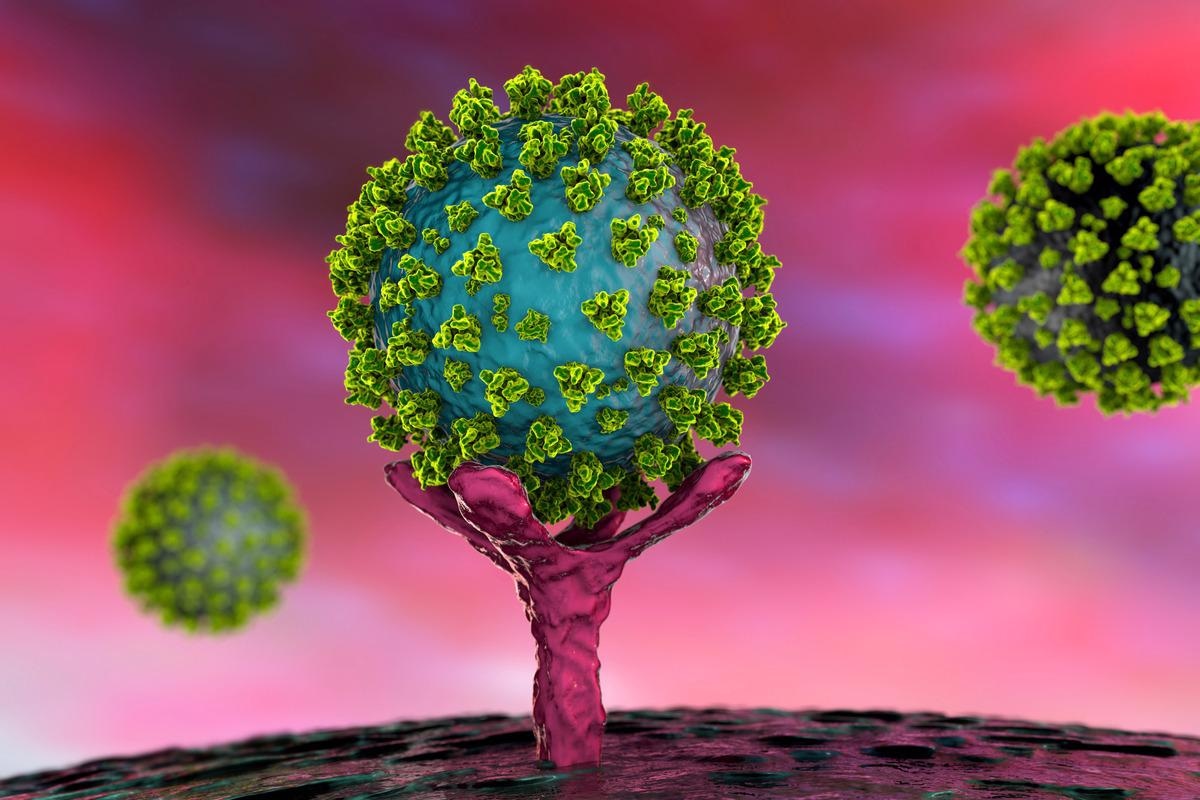 By Sam HancockReviewed by Danielle Ellis, B.Sc.Feb 2 2022
By Sam HancockReviewed by Danielle Ellis, B.Sc.Feb 2 2022The coronavirus disease 2019 (COVID-19) pandemic has spread to nearly every country globally and caused over 5 million deaths. Many countries were forced to enact costly and restrictive measures to help curb the transmission of severe acute respiratory syndrome coronavirus 2 (SARS-CoV-2). While the development and mass administration of vaccines allowed many of these measures to be dismantled, the emergence of new variants of concern continues to be of issue. Researchers have been investigating the dynamics of infection through a newly designed model.
 Study: Dynamics of SARS-CoV-2 and host immunity in infection and vaccine protection. Image Credit: Kateryna Kon/Shutterstock
Study: Dynamics of SARS-CoV-2 and host immunity in infection and vaccine protection. Image Credit: Kateryna Kon/Shutterstock

 *Important notice: Research Square publishes preliminary scientific reports that are not peer-reviewed and, therefore, should not be regarded as conclusive, guide clinical practice/health-related behavior, or treated as established information.
*Important notice: Research Square publishes preliminary scientific reports that are not peer-reviewed and, therefore, should not be regarded as conclusive, guide clinical practice/health-related behavior, or treated as established information.
A preprint version of the study is available on Research Square*, while the article undergoes peer review.
The study
The virus-immunity interaction network the researchers constructed was made of a viral infection module, innate, cellular and humoral immunity modules, and an immunosuppression module. The model was built by focusing on the immune response of the host in the infected area – such as the lungs – and nearby lymph nodes that drain from the area.
Multiple cytokines correlate with inflammatory status. The researchers chose the cytokine IL-6 as the primary indicator of inflammation. They estimated cytokine levels in the lungs as ten times that of peripheral blood cytokines to provide a reference for comparison between modeling results and clinical data.
There was no distinguishing between different subsets of memory lymphocytes, with Bm representing long-lived plasma cells and memory B cells and CD8+Tm representing both effector and central memory CD8+ T cells.
They then built a 32-variable ordinary differential equation (ODE) model to show the immune response process following infection with SARS-CoV-2. They define nCov as the number density of free viral load, and H and If as health pulmonary epithelial cells and infected cells. The number density of neutrophils, antigen-loaded and unloaded APCs, NK cells and CTLs are called: Neut, APCl, APCu, NK and CTL. CD4+Tm and CD8+Tm represent the number densities of T and B memory cells, and Ab is the neutralizing antibody titre.
The response of the immune system during infection with SARS-CoV-2 can vary wildly between individuals and is affected by age, physical condition and gender – among many other factors. To help understand the heterogeneity of the response, the researchers constrained the concentrations of immune cells and cytokines within the physiological range in the model. They used the Latin hypercube sampling model to search kinetic parameter space that would satisfy this condition and set a value for the virulence of the strain.
Simulating immune response over 60 days allowed the scientists to classify four modes of the immune response against infection, defined by the viral load and IL-6 peak. Modes 1-3 all show recovery by the 50th day, while mode 4 involves persistent infection. Mode 1 had the lowest peaks of IL-6, and mode 4 had the highest. As expected, the tissue damage was far lower in modes 1 and 2 compared to 3 and 4, and adaptive immunity was higher as well. Essentially, modes 1 and 2 showed much quicker and stronger immune protection in the first weak, clearing the virus without significant damage. In contrast, the slower response of the other modes allows more damage to occur, ad the length of the infection risks cytokines storms.
Following this, the researchers analyzed how vaccination protects the host following infection, assuming in the model that vaccination generates memory immune cells and antibodies that protect against infection. They observed three scenarios – one in which no Bm cells were present, and antibody titer slowly decays to zero, one in which Bm cells were present, and the decay was slowed, and one in which Bm cells produce enough antibody to maintain antibody titer at a steady level. After that, the dynamic processes of an individual's immune response were investigated by taking the initial viral inoculum at a certain level, fixing initial CD4+Tm, and sampling the later CD8+Tm and antibody titers uniformly and independently. They found that when individuals have a higher initial adaptive immune efficacy, they will be protected from infection, and the virus will clear more rapidly from their systems.
Conclusion
The authors highlight that they have created a quantitative framework that allows the dynamic mechanism of the immune response to SARS-CoV-2 to be properly investigated. This could be of significant use for other researchers, could be adjusted for use with other infections, and might help predict cytokine storm risk.

 *Important notice: Research Square publishes preliminary scientific reports that are not peer-reviewed and, therefore, should not be regarded as conclusive, guide clinical practice/health-related behavior, or treated as established information.
*Important notice: Research Square publishes preliminary scientific reports that are not peer-reviewed and, therefore, should not be regarded as conclusive, guide clinical practice/health-related behavior, or treated as established information.